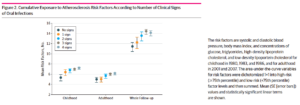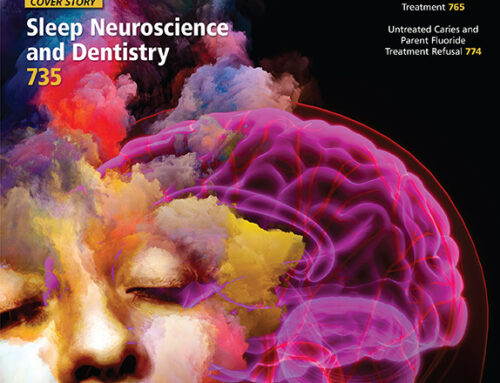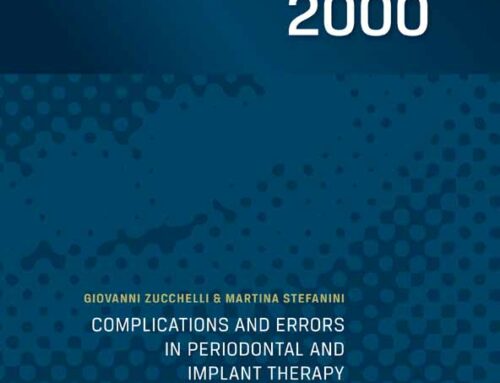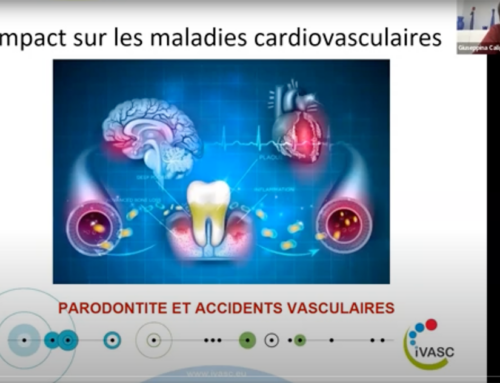Les infections buccales ou les états inflammatoires de l’enfance sont-ils associés au risque d’athérosclérose subclinique à l’âge adulte?
Dans cette étude de cohorte de 755 participants suivis jusqu’à l’âge adulte de 27 ans, plusieurs signes cliniques d’infections buccales chez l’enfant ont été associés à une exposition cumulative à des facteurs de risque cardiovasculaires pendant le suivi et à une athérosclérose subclinique à l’âge adulte.
Les infections buccales chez l’enfant peuvent constituer un facteur de risque modifiable de maladie cardiovasculaire chez l’adulte.
Pirkko J Prussinen et al (2019).
Association of Childhood Oral Infections With Cardiovascular Risk Factors and Subclinical Atherosclerosis in Adulthood
JAMA Network Open. 2019;2(4):e192523. Link to the Journal.
IMPORTANCE Severe forms of common chronic oral infections or inflammations are associated with increased cardiovascular risk in adults. To date, the role of childhood oral infections in cardiovascular risk is not known because no long-term studies have been conducted.
OBJECTIVE To investigate whether signs of oral infections in childhood are associated with cardiovascular risk factors and subclinical atherosclerosis in adulthood.
DESIGN, SETTING, AND PARTICIPANTS The cohort study (n = 755) was derived from the Cardiovascular Risk in Young Finns Study, an ongoing prospective cohort study in Finland initiated in 1980. Participants underwent clinical oral examinations during childhood, when they were aged 6, 9, or 12 years and a clinical cardiovascular follow-up in adulthood in 2001 at age 27, 30, or 33 years and/or in 2007 at age 33, 36, or 39 years. Cardiovascular risk factors were measured at baseline and during the follow-up until the end of 2007. Final statistical analyses were completed on February 19, 2019.
MAIN OUTCOMES AND MEASURES Four signs of oral infections (bleeding on probing, periodontal probing pocket depth, caries, and dental fillings) were documented. Cumulative lifetime exposure to 6 cardiovascular risk factors was calculated from dichotomized variables obtained by using the area-under-the-curve method. Subclinical atherosclerosis (ie, carotid artery intima-media thickness [IMT]) was quantified in 2001 (n = 468) and 2007 (n = 489).
RESULTS This study included 755 participants, of whom 371 (49.1%) were male; the mean (SD) age at baseline examination was 8.07 (2.00) years. In this cohort, 33 children (4.5%) had no sign of oral infections, whereas 41 (5.6%) had 1 sign, 127 (17.4%) had 2 signs, 278 (38.3%) had 3 signs, and 248 (34.1%) had 4 signs. The cumulative exposure to risk factors increased with the increasing number of oral infections both in childhood and adulthood. In multiple linear regression models, childhood oral infections, including signs of either periodontal disease (R2 = 0.018; P = .01), caries (R2 = 0.022; P = .008), or both (R2 = 0.024; P = .004), were associated with adulthood IMT. The presence of any sign of oral infection in childhood was associated with increased IMT (third tertile vs tertiles 1 and 2) with a relative risk of 1.87 (95%CI, 1.25-2.79), whereas the presence of all 4 signs produced a relative risk of 1.95 (95%CI, 1.28-3.00). The associations were more obvious in boys: if periodontal diseasewere present, the corresponding estimate was 1.69 (95%CI, 1.21-2.36); if caries, 1.46 (95%CI, 1.04-2.05); and if all 4 signs of oral infections, 2.25 (95%CI, 1.30-3.89). The associations were independent of cardiovascular risk factors.
CONCLUSIONS AND RELEVANCE Oral infections in childhood appear to be associated with the subclinical carotid atherosclerosis seen in adulthood.






